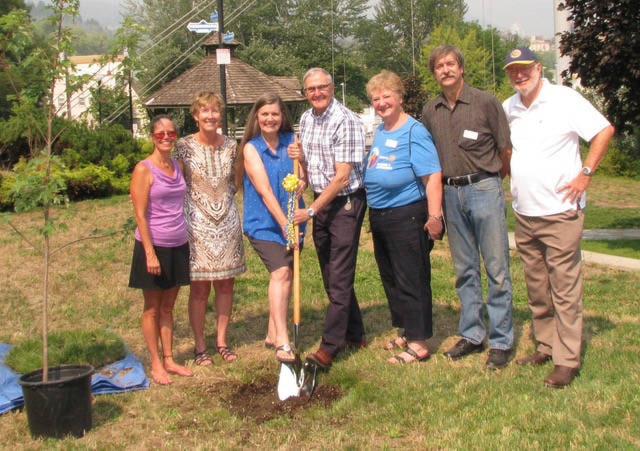What began as one man’s quest to see Trail’s dying hillsides revived has become a source of pride for an entire community and an international organization.
In a symbolic ceremony on Wednesday, Jerri Anderson, the governor for Rotary District 5080, which encompasses western Washington, southeast B.C. and northwest Idaho, joined Trail Mayor Mike Martin in planting a tree in Trail’s Rotary Park to commemorate decades of tree planting by Trail Rotarians.
Rotary tree planting began with Rotarian Joe Landucci who started doing his own experiments with reforestation in the 1930s.
In an essay by Judy Pitre, Landucci’s daughter, the first “official” tree planting started in 1955 but the roots of the program began way before that in the family’s yard where Landucci planted willow clippings he intended to use for tree planting.
She described his anguish of watching vegetation around Trail dying from the smelter smoke. That prompted him to begin his crusade.
He would plant seedlings on the hillsides around Trail but had little luck with any sustained success.
However, through observation and research he learned how the shade provided by willows helped encourage pine seedlings to grow. He knew how to give his plants a fighting chance through shade, moisture and support. Once the willows he planted began establishing themselves in the area, he began planting small pine seedlings and thus the tree-panting program began to grow.
The initial efforts involved a few Rotarians and some volunteers with the right equipment. There was success and set backs but the dedication didn’t waver.
The tree planting program grew and evolved and soon became an annual fall event in Trail, wrote Pitre.
A variety of groups, ranging from Girl Guides, to Cominco, to the City of Trail began helping out.
Meanwhile the B.C. Department of Forests contributed seedlings for many years. By some estimated, over five million trees have been planted over the decades resulting in the surrounding forested hillsides today.
Pitre described accounts from Rotarians climbing steep shale or sandy slopes with shovels and “quiet pride,” to fulfill their goal.
“The yellow and orange hillsides that adorn Trail in the fall today are there because of the work that these men quietly accomplished,” she added.
